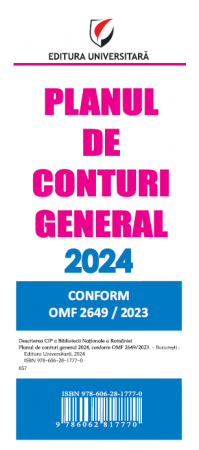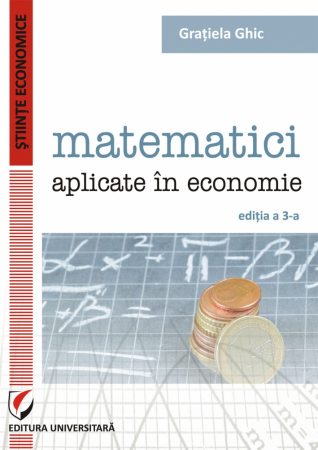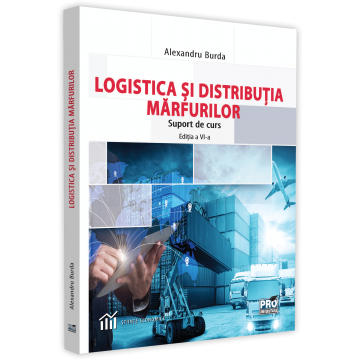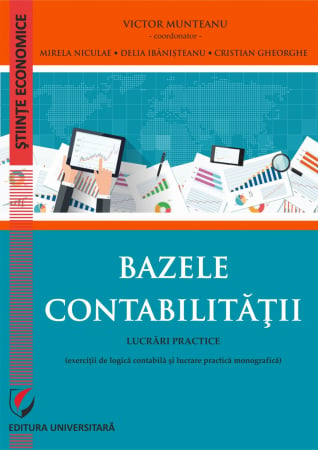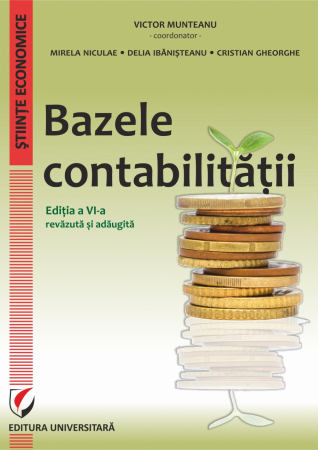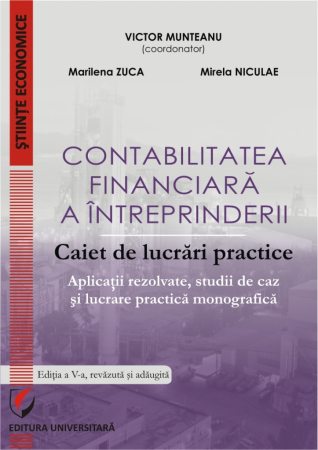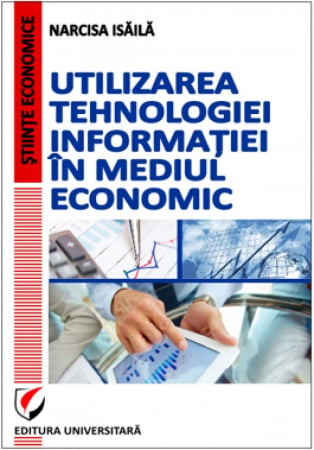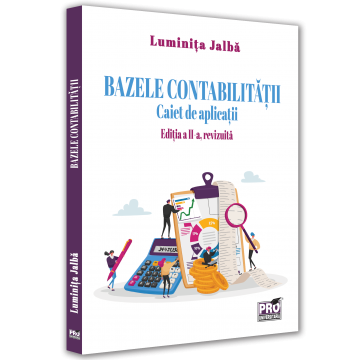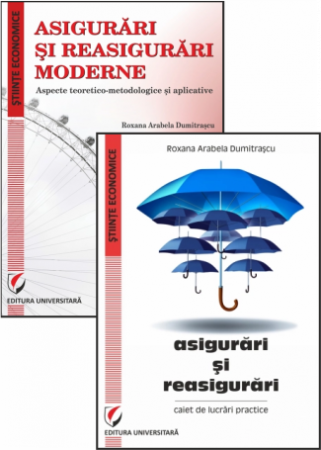ISBN: 978-606-591-644-9
DOI: 10.5682/9786065916449
Publisher year: 2013
Edition: I
Pages: 288
Publisher: Editura Universitară
Author: Emilia Pascu
- Description
- Download (1)
- Authors
- Content
- More details
- Reviews (0)
The present scientific material is addressed to all those who are looking for information regarding the composition and quality of the products, in close connection with the issue of consumer safety. All this in the current conditions, when subject to the limitation of resources, the quality of food decreases day by day and the influences on health become more and more obvious and worrying.
-
Food Pproducts and Consumer Food Safety
Download
Is PhD in Economics and holds at the Faculty of Tourism and Commercial Management Dimitrie Cantemir Christian University, Bucharest, courses Fundamentals goods science, Food products and consumer safety and design aesthetics goods. Scientific work of the author is embodied in titles like: Examination of goods, Design aesthetic of merchandise, customer relationship management, Food safety and consumer goods etc. as author and co-author, as well as numerous articles and studies, covering the area of quality products and services with a focus on consumer safety and creating a long-term relationship with clients.
Unit no. 1. Elements of commodity quality theory and food consumer safety / 11
1.1. Objectives and Competences of unit no. 1 / 12
1.2. Content of the unit / 12
1.2.1. Goods and the consumer / 12
1.2.2. Food quality / 13
1.2.3. Food consumer safety / 18
1.2.4. Specific aspects of food standardization / 21
1.3. Worksheet: Determining the energy value of food products / 24
1.4. Verification work Unit no. 1 / 29
1.5. Bibliography Unit no. 1 / 33
Unit no. 2. Water and mineral salts in food / 34
2.1. Objectives and Competences of unit no. 2 / 35
2.2. Content of the unit / 35
2.2.1. Water in food composition / 35
2.2.2. Maintaining food stability / 38
2.2.3. Content of mineral salts in foodstuffs / 38
2.3. Worksheet: Water content in food / 42
2.4. Verification work Unit no. 2 / 42
2.5. Bibliography Unit no. 2 / 47
Unit no. 3. Carbohydrates and proteins in the composition of food products / 48
3.1. Objectives and Competences of unit no. 3 / 49
3.2. Content of the unit / 49
3.2.1. Presentation of carbohydrates in food / 49
3.2.2. Classification and properties of carbohydrates / 51
3.2.3. Proteins in the structure of food products / 53
3.2.4. Classification and properties of food proteins / 54
3.3. Worksheet: Carbohydrate and protein content / 57
3.4. Verification work Unit no. 3 / 58
3.5. Bibliography Unit no. 3 / 62
Unit no. 4. Lipids and vitamins in food / 63
4.1. Objectives and Competences of unit no. 4 / 64
4.2. Content of the unit / 64
4.2.1. Definition of lipids / 64
4.2.2. Lipid classification / 65
4.2.3. Transformations and properties of lipids in food products / 67
4.2.4. Vitamins / 69
4.3. Worksheet: Lipid content of some groups of goods / 70
4.4. Verification work Unit no. 4 / 71
4.5. Bibliography Unit no. 4 / 77
Unit no. 5. Food enzymes and acids / 78
5.1. Objectives and Competences of unit no. 5 / 79
5.2. Content of the unit / 79
5.2.1. Enzymes / 79
5.2.2. Food acids / 82
5.3. Worksheet: Acid content of food / 84
5.4. Verification work Unit no. 5 / 85
5.5. Bibliography Unit no. 5 / 88
Unit no. 6. Substances added in food composition / 89
6.1. Objectives and Competences of unit no. 6 / 90
6.2. Content of the unit / 90
6.2.1. Dyes / 90
6.2.2. Food additives / 94
6.2.3. Toning and flavoring substances / 103
6.3. Verification work Unit no. 6 / 104
6.4. Bibliography Unit no. 6 / 107
Unit no. 7. Accidental substances in food / 109
7.1. Objectives and Competences of unit no. 7 / 110
7.2. Content of the unit / 110
7.2.1. Contaminants / 110
7.2.2. Classification of contaminants / 111
7.2.3. The main groups of contaminants / 112
7.2.4. Genetically modified organisms / 115
7.3. Verification work Unit no. 7 / 117
7.4. Bibliography Unit no. 7 / 120
Unit no. 8. Ensuring the stability and quality of food products / 121
8.1. Objectives and Competences of unit no. 8 / 122
8.2. Content of the unit / 122
8.2.1. Biological principles of food preservation / 122
8.2.2. Conservation methods / 124
8.2.3. Food storage, packaging and labeling / 131
8.3. Verification work Unit no. 8 / 137
8.4. Bibliography Unit no. 8 / 142
Unit no. 9. Milling and bakery products / 143
9.1. Objectives and Competences of unit no. 9 / 144
9.2. Content of the unit / 144
9.2.1. Grain structure / 144
9.2.2. The most important cereals / 145
9.2.3. Products obtained from cereals / 148
9.3. Worksheet: Organoleptic analysis of cereal products / 156
9.4. Verification work Unit no. 9 / 159
9.5. Bibliography Unit no. 9 / 162
Unit no. 10 Vegetables, fruits and industrialized products from their processing / 163
10.1. Objectives and Competences of unit no. 10 / 164
10.2. Content of the unit / 164
10.2.1. Assortment of fresh vegetables and fruits / 164
10.2.2. Nutritional value of fresh vegetables and fruits / 166
10.2.3. Vegetable and fruit products / 168
10.2.4. Organic products / 169
10.3. Worksheet: Assessing the quality of vegetable products / 172
10.4. Verification work Unit no. 10 / 173
10.5. Bibliography Unit no. 10 / 178
Unit no. 11. Sugar and sugar products / 179
11.1. Objectives and Competences of unit no. 11 / 180
11.2. The content of the unit / 180
11.2.1. Sugar / 180
11.2.2. Sugar products / 182
11.3. Worksheet - Assessing the quality of sugar products / 188
11.4. Verification work Unit no. 11 / 191
11.5. Bibliography One no. 11 / 195
Unit no. 12. Spices and food stimulants / 196
12.1. Objectives and Competences of unit no. 12 / 197
12.2. Content of the unit / 197
12.2.1. Spices / 197
12.2.2. Food quality incentives / 201
12.3. Worksheet - Assessing the quality of natural spices / 209
12.4. Verification work Unit no. 12 / 211
12.4. Bibliography Unit no. 12 / 215
Unit no. 13. Milk and derived products / 216
13.1. Objectives and Competences of unit no. 13 / 217
13.2. Content of the unit / 217
13.2.1. Chemical composition and nutritional value of milk / 217
13.2.2. Classification of dairy products / 219
13.3. Worksheet: Assessing the quality of dairy products / 227
13.4. Verification work Unit no. 13 / 231
13.5. Bibliography Unit no. 13 / 234
Unit no. 14. Eggs, fish and fish products / 235
14.1. Objectives and Competences of unit no. 14 / 236
14.2. Content of the unit / 236
14.2.1. Structure and composition of the egg / 236
14.2.2. Structure and composition of fish and derived products / 240
14.3. Worksheet: Assessing the quality of eggs, fish and fish products / 244
14.4. Verification work Unit no. 14 / 247
14.5. Bibliography Unit no. 14 / 251
Unit no. 15. Meat and derived products / 252
15.1. Objectives and Competences of unit no. 15 / 253
15.2. Content of the unit / 253
15.2.1. The nutritional value of meat / 253
15.2.2. Chemical composition of meat / 255
15.2.3. Classification of meat / 257
15.4. Worksheet: Assessing the quality of meat and derived products / 261
15.3. Verification work Unit no. 15 / 263
15.4. Bibliography Unit no. 15 / 267
Unit no. 16. Alcoholic beverages / 268
16.1. Objectives and Competences of unit no. 16 / 269
16.2. Content of the unit / 269
16.2.1. Distilled alcoholic beverages / 269
16.2.2. Undistilled alcoholic beverages / 272
16.2.3. Wine diseases / 275
16.2.4. Berea / 277
16.3. Worksheet: Assessing the quality of alcoholic beverages / 278
16.4. Verification work Unit no. 16 / 282
16.5. Bibliography Unit no. 16 / 286
Bibliographic references / 287
Food is a process by which more than fifty substances (essential nutrients) are introduced into the body, necessary for growth, development, vital processes and energy supply and for modern man, it must be adapted to the conditions in which it carries out its daily activity. so that it remains physically and mentally healthy.
Increasingly sedentary life, stress, lack of physical activity, the fact that intellectual work has an increasing share, makes modern man consume high amounts of stimulants (coffee, tea, alcohol) and ready-made foods, with a high content of chemical additives, misled by the tastes that often deceive us by urging harmful, devitalized foods. These negative aspects of the current diet require an education in children in order to adopt and promote a rational diet. We are already facing cases of obesity in children, as a result of the increasing and more frequent consumption, from an increasingly younger age, of inappropriate foods (junk-food) which, through attractive organoleptic characteristics, urges consumption.
Rational nutrition determines the consumption of foods with a complete and balanced content of nutrients, vitamins and mineral salts. Given the extraordinary offer on the food market, a rational diet is not difficult to achieve. The available goods are able to satisfy the most diverse tastes, ensuring at the same time the rational diet to which we must strive.
The commodity is the material correspondent of a determined consumption need. This material correspondent created to be made by the market - material object (including as a support for various information) - appears in two hypostases: as a product-entity until the contracting phase, then as a batch of identical, homogeneous and finished goods until the moment of sale, when it is transmitted to the consumer, again, as a product-entity. Traditional merchandise defines goods as a movable economic good intended for exchange, which meets certain requirements of materiality and transferability. This can be considered, on the one hand, a means of satisfying particular needs derived from the subjective desires and aspirations of the individual, and on the other hand, a system of means of production derived from the social consumption system.
Currently, the consumer behavior of consumers tends to become more uniform due to the increasingly differentiated, more complex supply of goods that better meets expectations. In reality, however, consumption is based on a small number of cereals, potatoes, meat, eggs of birds raised industrially for this purpose, emulsified and refined fats.
Modern goods seen as a whole, have a functional component - having a precise destination it meets a well-defined purpose; an instrumental component - the technical-economic circulation of the goods is based on a judiciously established technical and commercial logistics; an aesthetic component - the commodity being a form of mediation between the needs of consumers and the possibilities of producers, based on the design and aesthetics of the product and last but not least includes a social component, because it generates a certain satisfaction in consumption, determines preferences and retains the consumer. namely social status.
Taking into account the daily demand that acts on consumers, it is particularly important to pay more attention to food and implicitly to food quality.
A healthy diet involves, first of all, knowing the truth about food and secondly eliminating harmful substances from the daily diet. Eating healthy, based on authentic information, can avoid discomfort caused by diseases due to a chaotic diet.
Ignoring the direct relationship between food and health, the negative effects will not be long in coming, which is why this material is a useful tool for all food consumers, interested in knowing the basics of a rational, healthy diet.

6359.png)
![Food Products and Consumer Food Safety [1] Food Products and Consumer Food Safety [1]](https://gomagcdn.ro/domains/editurauniversitara.ro/files/product/large/marfurile-alimentare-si-securitatea-consumatorului-de-alimente-1403-504255.jpg)
